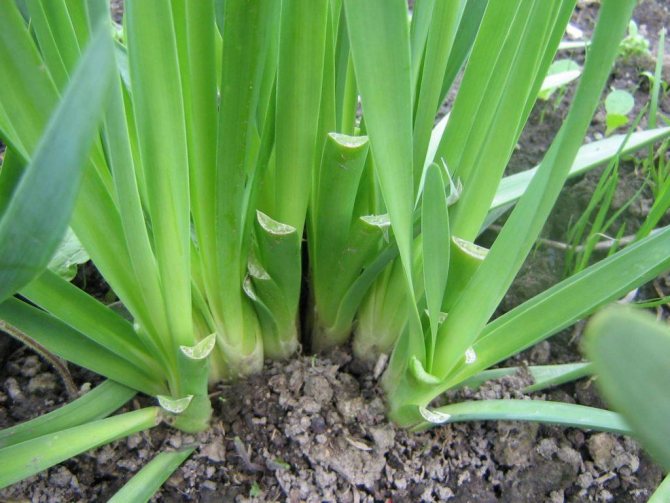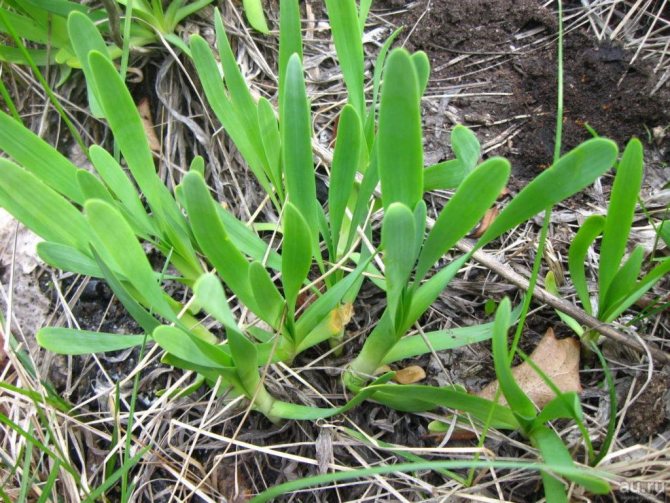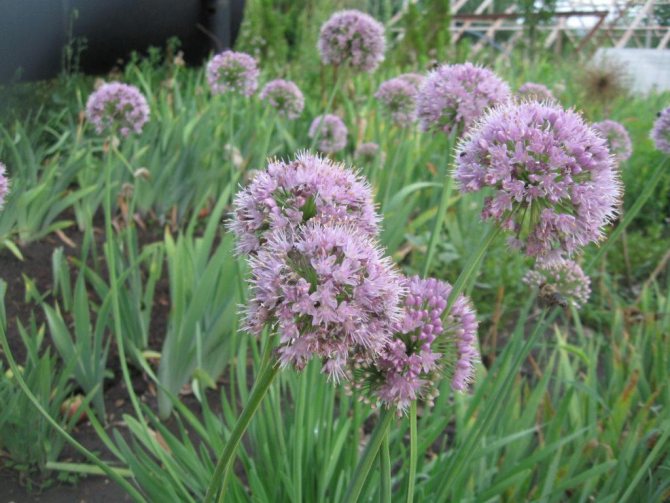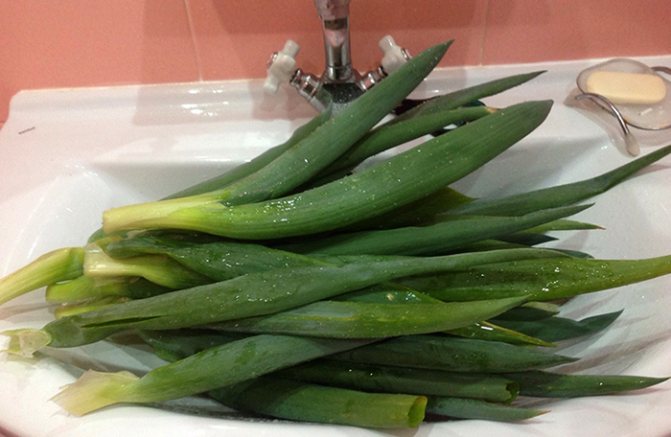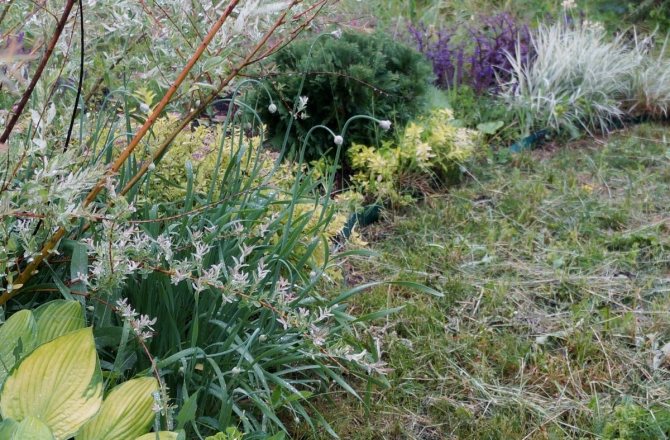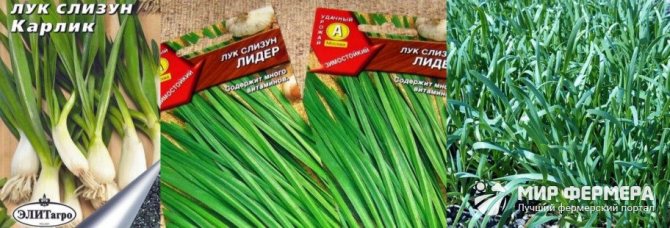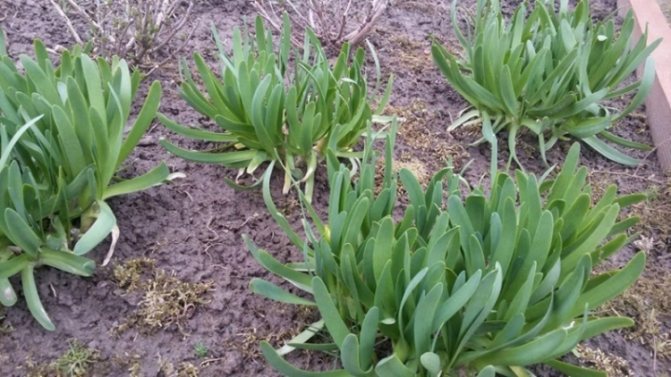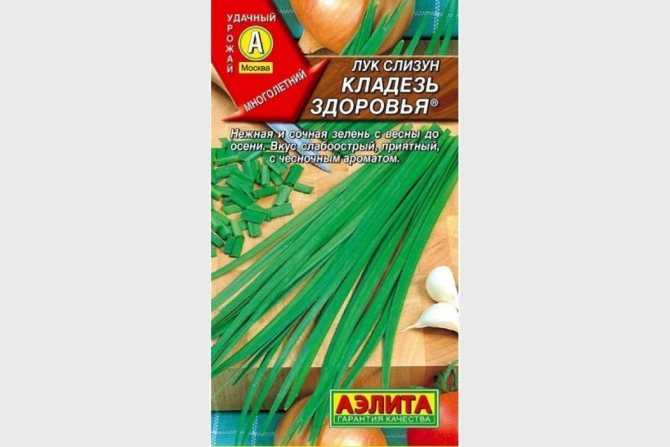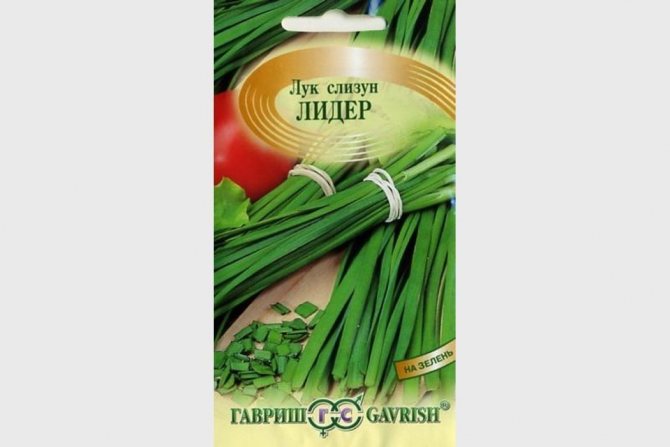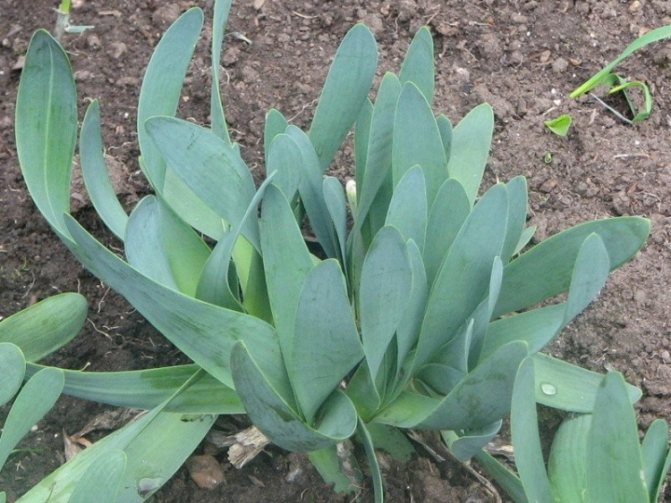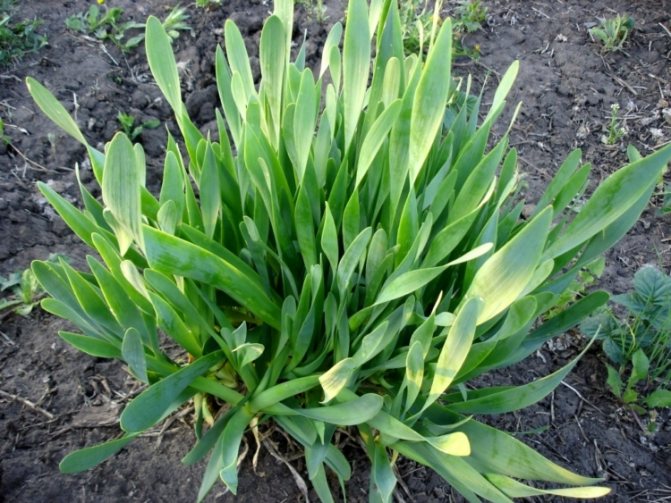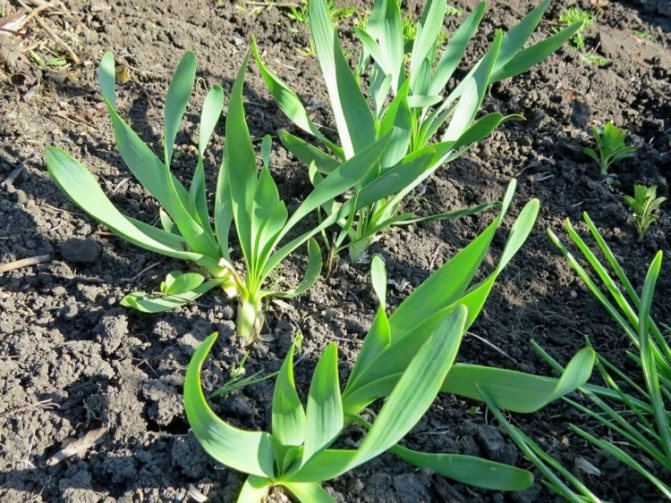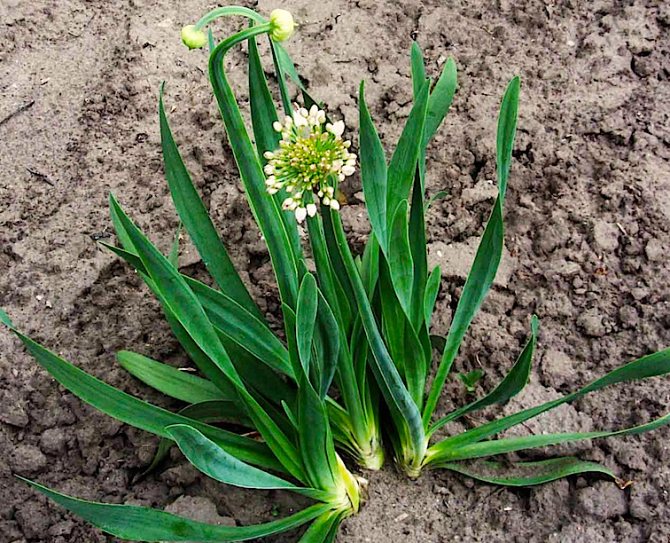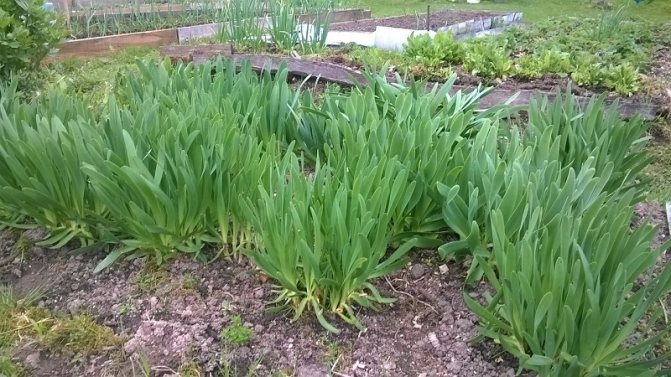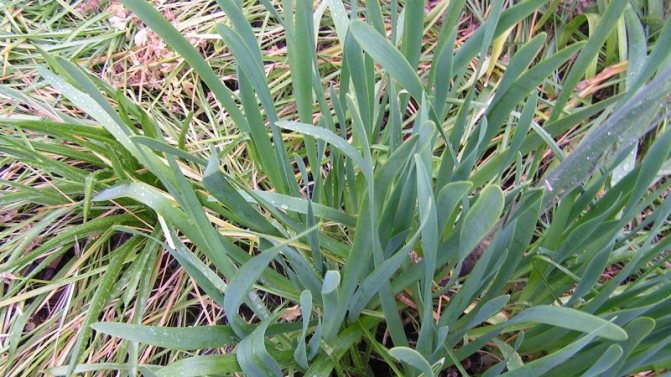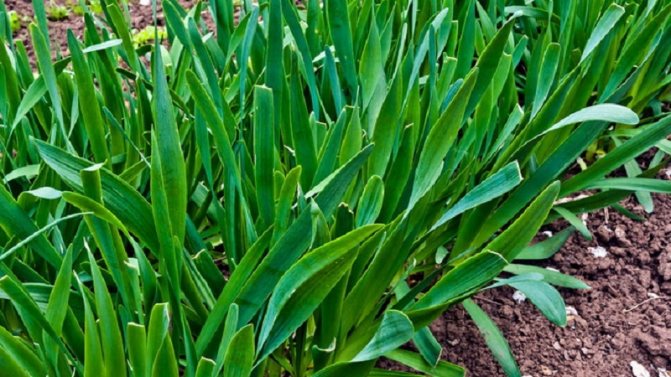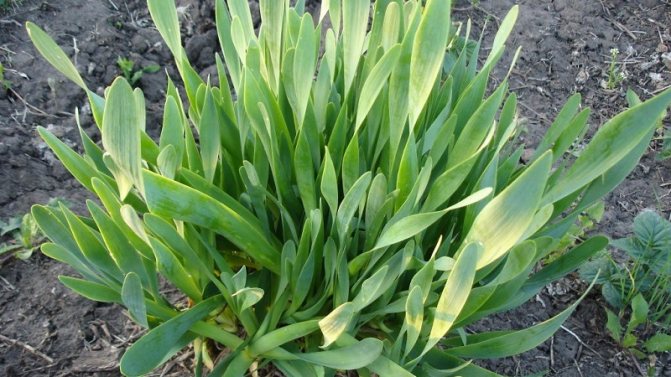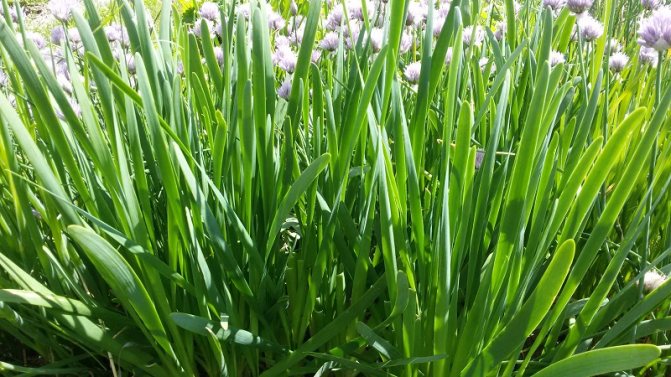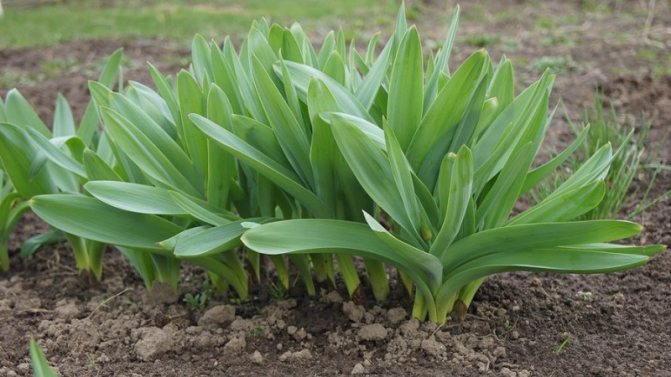If we talk about onions, then most are usually onions, green, or, in extreme cases, leek or chives. But there is another variety - slug onion. It is rarely seen in the beds, and in vain, because this culture is not only beautiful, but also extremely useful. In addition, it will not be difficult to grow it on your own.
For those who have never heard of this type of onion, it will be useful to read today's article. It provides a detailed description of the crop, its best varieties and tips for planting and growing.
Characteristic
In the middle of summer, a plant with a drooping stem and gray leaves produces flowers that resemble balls of a pale pink, lilac, light purple color.
History of appearance
Slime comes from Central Asia, where perennial grass is still found on hills, slopes and meadows. The plant has taken root in Siberia, in the Altai mountains and can withstand minus 40, even when the ground is not covered with snow.
People noticed that the animals were feasting on the leaves of the slime and began to plant it in the fields and yards. Unlike onion varieties, small bulbs and green bunches were not so popular, they were not placed on the table during the feasts of emperors and pharaohs, but they have a unique composition and have healing properties.
Cooking use
Onions are added to salads. This can be done almost all summer. It is also used as an additive to hot dishes and snacks. The preparation of the plant is carried out for future use. You can dry it, salt it, and pickle the onions. Freezing is allowed. In this form, it perfectly retains its valuable properties.
You can create an impromptu vegetable garden right on the windowsill. To do this, in the fall, an onion is dug from the garden bed and planted in a pot. The plant must be kept in the cold. This will activate its growth. Onions produce fresh leaves well. Using this method, there will be fresh herbs on the table even in winter.
general description
Siberian onion, as the slime is also called, is distinguished by a thick drooping stem, which straightens when flowers appear. The gray leaves that extend from the base have a smooth surface; at the fracture they secrete juice in the form of mucus. Cylindrical bulbs, covered with a thin film, are attached to the root. The flower arrow grows to a height of 60–70 cm and straightens, like the stem, when the umbrella is opened.
Taste qualities
Nutrients accumulate in the rhizome, false bulbs are used for food. Slime forms a lot of greenery, in the tender and juicy leaves you can feel the taste of garlic. Feather salads are made all year round. The culture does not freeze in frost and grows greens very early.
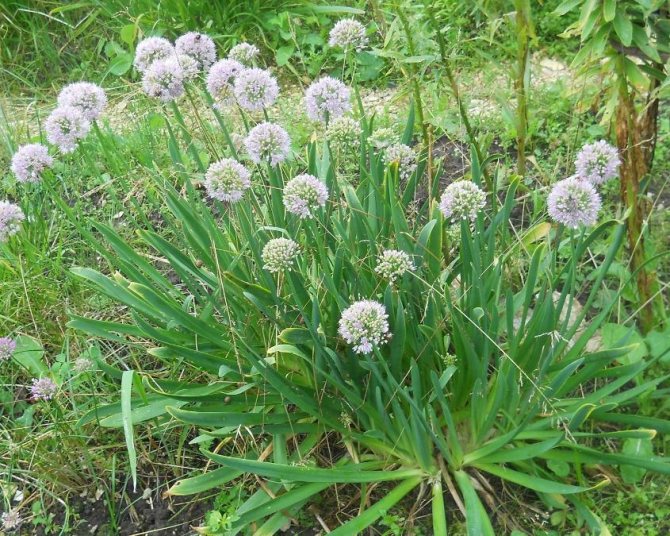
The benefits of the plant for the body
The onion has a garlic flavor. It is associated with a pleasant, slightly spicy character. The garlic flavor makes onions extremely popular for human consumption. You can eat quite a lot of it at a time. But not only the taste is limited to the advantages of this plant. Its value is also determined by the rich set of chemical components. In its composition, you can find substances that benefit the body:
- The mineral composition is represented by a wide palette. Onions especially contain a lot of iron.This circumstance allows the use of onions as a dietary supplement for anemia resulting from iron deficiency. It is also useful for those who have low hemoglobin.
- Vitamins and minerals are combined in the plant quite organically, which makes it possible to use onions for problems with the digestive tract.
- The leaves contain substances that are able to eliminate pain, stop signs of inflammation. This property has found a place when it is used as an external remedy.
- 10 kg of onion contains so many valuable components that it will be enough for a person for a whole year. To meet the daily need for a vitamin and mineral complex, a person needs to consume 27 g of onions daily.
- When onions are consumed, the activity of the heart is normalized.
- The thyroid gland puts its work in order.
- The plant is able to strengthen the vascular wall and reduce the level of harmful low molecular weight cholesterol.
- The use of the plant leads to an improvement in the quality composition of the blood.
- If vitamin deficiency is troubling in the season, then the slime onion will become a reliable assistant. He will help because it contains a rich set of vitamins.
- The mild taste and small amount of fiber make this onion suitable for baby food.
Features of the use of legumes and a list of legumes
Beneficial features
Slime onions are rich in thiamine, riboflavin, ascorbic acid, carotene. The leaves of the plant contain polysaccharides, trace elements are contained in the form:
- magnesium;
- molybdenum;
- zinc.
A lot of iron in onions, which copes with anemia, increases the level of hemoglobin. Slime helps to strengthen the immune system, removes toxins and toxins, stimulates digestion, normalizing acidity. Leaves applied to an abrasion or wound relieve pain. When eating greens:
- Vessels and nails are strengthened.
- Excess cholesterol comes out.
- The heart works better.
In terms of the amount of vitamins and organic acids, the slug leaves behind apples. In early spring, feathers protect people from colds and stress.
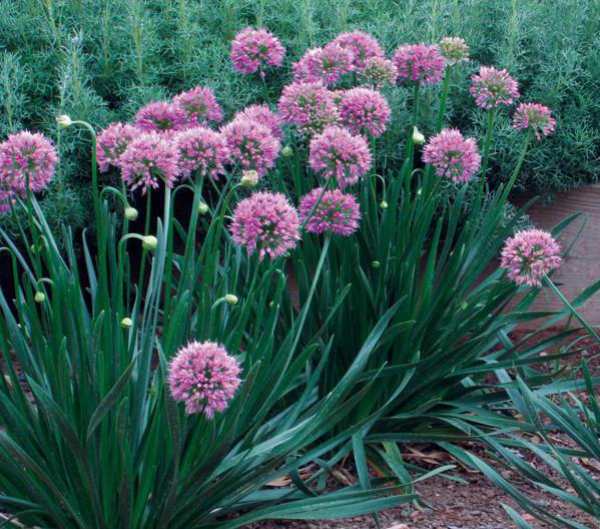

Advantages and disadvantages
In order not to feel the lack of amino acids and minerals, you need to eat 270 mg of feathers every day. The advantages of a slime onion include:
- early appearance of greenery;
- the ability to grow for more than one year;
- the presence of a pleasant aroma;
- the presence of a unique composition;
- unpretentious care.
The leaves are cut for consumption until the fall, since they do not coarse, do not become tough, and are very useful for children and the elderly. The plant does not have a rest period. Greens retain their juiciness for a long time, leaves after frost. The disadvantage of the slime is that the bulb is too small.
Cooking applications
Salads are seasoned with vegetable feathers, leaves are placed in various dishes to emphasize their taste, and eaten with sour cream and vegetable oil. Salted greens, pickled onions. Feathers are dried, crushed, used as spices.
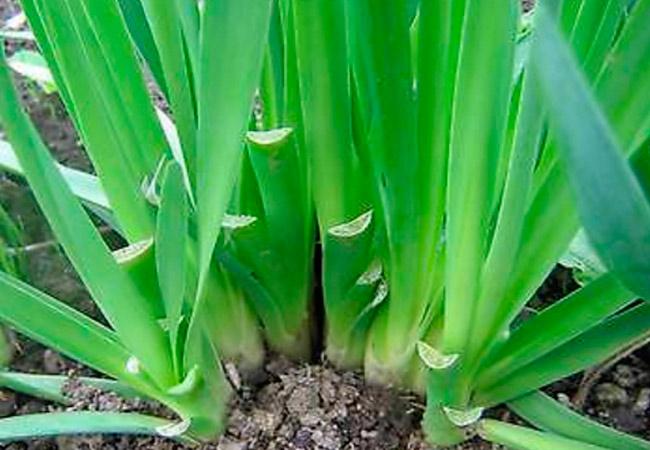

Contraindications
Not everyone can eat slime. If one of the substances present in the vegetable is intolerant, an allergy occurs, and both the leaves and the head have to be discarded.
Doctors do not advise adding slime to dishes in case of exacerbation of gastritis and other pathologies of the digestive organs.
Decorative function
Feathers and spherical inflorescences of onions look very beautiful and attract bees, butterflies, bumblebees. The plant is decorated with flower beds, in gardens and parks, slugs are placed with islands. Landscape designers use a decorative perennial.
How to plant onions correctly?
The easiest way to grow green onions is to take the already sprouted turnip and stick it in a container with a little water. This is how our mothers and grandmothers did to provide the family with fresh greens in the winter.The well-trodden path is good for those who do not want to bother getting lush thick feathers.
If your goal is to harvest a good, stable harvest, we recommend heeding the following tips:
- Choose a good planting material. There are different varieties of onions: onion (turnip), batun, leek, chives, shallots, slime and others. But on the windowsill, many people prefer to grow turnip. To get greens, it is better to select small old bulbs that have already been saturated with moisture. The size does not matter, but it is more profitable to germinate a small onion, because it is more compact, and gives the same number of feathers.
- Cut off the tops. The greens will grow denser and appear earlier if you cut the top of the bulb by about 1/4 (the side opposite the bottom with the roots). Don't be afraid to damage your bow. Some housewives cut off not only the top, but also the sides of large turnips. They are used to fry them in the soup. If the roots and core are not damaged, the onion will grow even as it is.
- Find a wide pot - a pallet. There is not much space on the windowsill, so to get a good harvest, you need to place the onion compactly. A square wide pot, including a homemade one, is ideal for this. For example, from an egg carton or food container.
- Water the bulbs regularly. The growth rate of greenery and its juiciness directly depend on the amount of moisture. Onions are very fond of watering and can grow in water alone without land.
- Do not cut the greens, but tear off at the base. If properly grown onions, it can supply feathers for 2-3 months, releasing more and more, until the inner strength runs out. But when cutting greenery with a knife or scissors, the plant spends energy on recovery and slows down growth for some time. Breaking a feather at the base is less traumatic for him.
- Plant the onion in 3-4 passes. The recommended break between plantings is 10 days. This technique allows you to harvest fresh herbs continuously. While one batch is growing feathers, the other will already reach maturity.
The first harvest of onions takes 2–2.5 weeks. By this time, the feathers have grown by 20 cm. After that, they can be cut off regularly and eaten separately fresh or as part of meals.
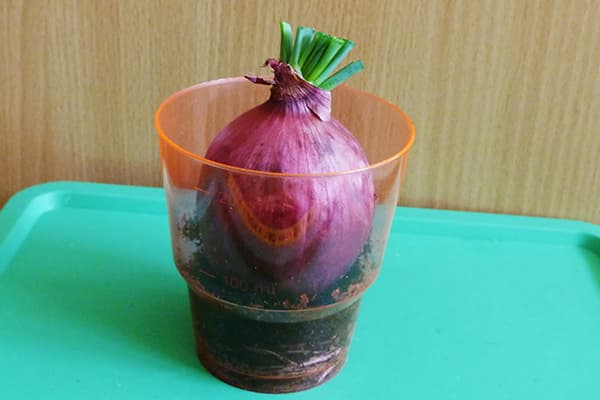

Growing container
You can grow onions on a windowsill in a variety of dishes. There are even special bulbs that can be purchased from the same department as flower pots. The fixture has a hole for each bulb, which allows them to be securely fixed. The semblance of such a device can be made from a low plastic container by making holes in its lid the size of a medium-sized chicken egg (with scissors or a heated knitting needle).
You can also use for growing onions:
- glass jars for baby food (filled with water, and the onion sits on the neck, hanging the roots);
- plastic packaging for eggs;
- plastic bottles (cut lengthwise or crosswise);
- food containers;
- flower pots.
Or you can turn the onion on the windowsill into an original decoration resembling a pineapple. To do this, cut off the neck in a plastic bottle and make 15-25 holes for the bulbs around the perimeter. Then you should stick them with the roots inside and fill the bottle with damp earth. When the greens are dancing, the landing will look like this:
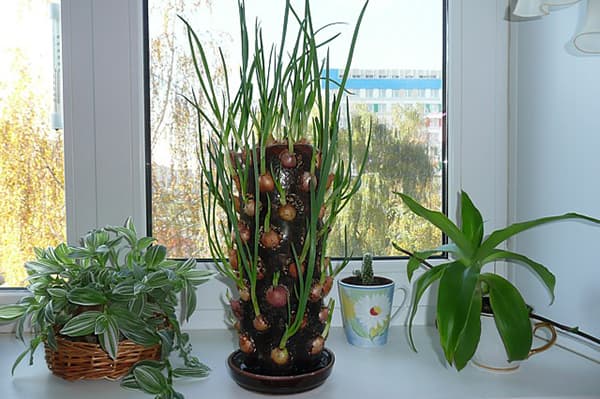

Substrate
Although onions grow well in regular water, many people choose to plant them in the ground. Firstly, it nourishes the plant better, and secondly, it reduces the likelihood of decay. Garden soil is suitable as a substrate. You can just dig it up on the street, and wrap it at home in a dense cloth and bake it in the oven.
Varietal onions are more whimsical to the ground. He needs necessarily loose soil, fertilized with humus and manure, with a neutral pH. Also, when grown in the ground, onions need a drainage system.
If you forget to water your plants occasionally, hydrogel beads will come in handy. They absorb and retain moisture for a long time.With them, moisture-loving onions will always feel good.
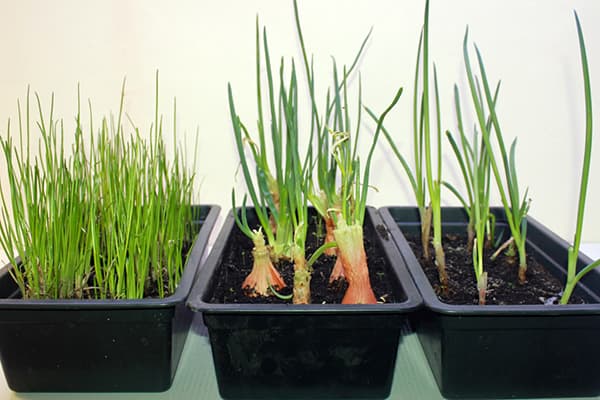

Varieties
In order for onion seeds to germinate, you need to buy them in a specialized store or order on the supplier's website, where you can choose different varieties.
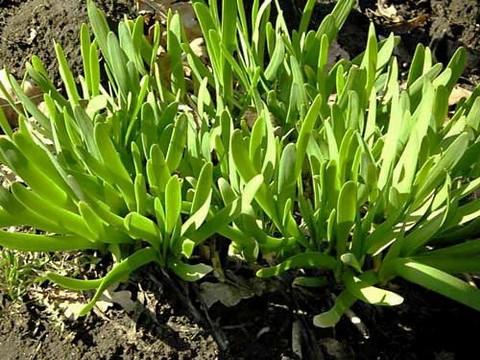

Green
The slime, created by breeders from Siberia, can withstand severe frosts without any problems, does not attract pests, does not suffer from white rot, and is not affected by penicillosis. The onion pleases with high yields for 7 years and only after this time it is transplanted to another site. From a meter square. cut from 5 to 6 kg of feathers.
Dwarf
This variety of slime has small bushes, but the low stems are densely covered with juicy leaves that grow in length up to almost 20 cm and twist in a spiral. The dwarf takes root in any climate, is not afraid of low temperatures. Feathers have a pungent taste, but do not smell onions.
See also
Growing and caring for chives: Bohemia, Medonos and Chemal varieties
To read
Leader
The variety reacts positively to feeding and watering, loves loose soil. Wide large leaves grow back in a month, do not lose their juiciness for a long time. From 1 sq. m. cut 3-3.5 kg of fragrant greens.
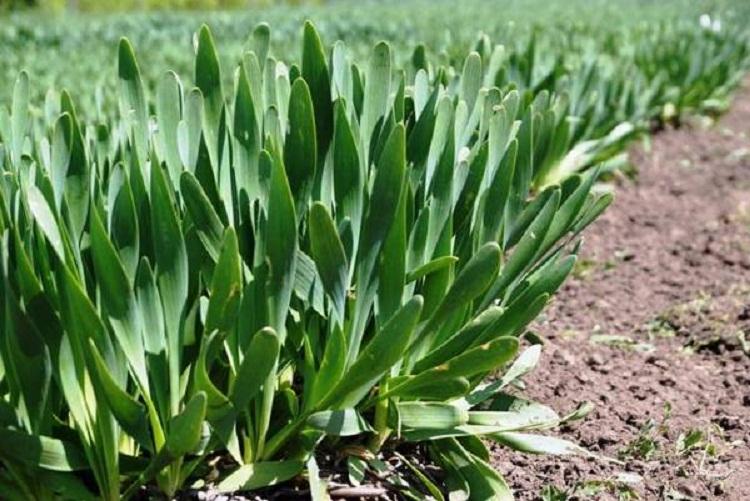

Charm
Slime onions with a beautiful name with a high yield are not happy, but long feathers have a sharp pleasant taste, and the bush itself looks original, enchants with snow-white inflorescence balls.
Simbir
Medium ripening slime tolerates severe winters. The wide, furrowed leaves almost do not curl, are covered with a purine bloom and are rich in polysaccharides, ascorbic acid. The bush weighs 35–40 g, the greens are used fresh.
Salad
The onion forms leaves within 40 days following the emergence of seedlings. Flat dark feathers grow up to 30–35 cm in length and up to 3 in width. The taste of the leaves is not pungent, but there is a faint aroma of garlic. During the growing season, the yield exceeds 3 kilograms. The Saladny variety does not suffer from diseases, it is rarely affected by insects.
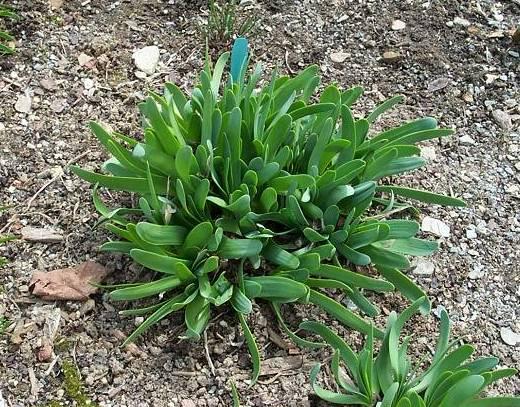

Well of health
In early slime onions, greens grow quickly and at the same time. Long feathers do not become tough, do not coarse, do not lose their juiciness. They delight with a spicy taste and are used as a seasoning.
Waltz
Early ripening surprises the onion, the delicate leaves of which, twisted in a spiral, are cut off in a month. One bush grows 600-900 g of greenery. The Waltz variety is planted not only for the sake of feathers, but also to decorate flower beds, alpine hills.
Terms and rules for harvesting
It should be clarified right away that a plant grown from seeds will give a very meager harvest in the first year. Moreover, the leaves will not be very tasty and juicy, so it is better to postpone the tasting until next season (Figure 7).


Figure 7. Greens can be cut from bushes throughout the season
The maximum yield level occurs in the third year of cultivation. During this time, you can cut greens up to seven times over the summer. The last time the harvest should be carried out in August, so that in the fall the culture has time to gain enough strength for the winter and can endure the frosts. It is best to cut your herbs in dry weather. After that, it can either be consumed fresh or frozen for future use.
You will find more information on growing perennial slime onions in the video.
Features of sowing seeds
It is possible to dilute the slime in the garden or in the summer cottage with bulbs. This method of reproduction does not cause difficulties; the plant will not have to be transplanted for several years. Another option involves the use of seeds and guarantees high yields for more than one season.
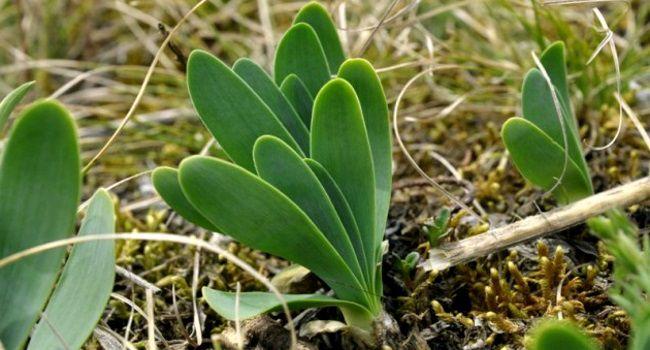

Time
Onions are sown for seedlings at the beginning of the first month of spring. Before the onset of warm days, she will have time to grow up and get stronger and quickly take root in the open field.
Seed preparation
Before planting, onion seeds are disinfected in potassium permanganate, after which they are soaked in the Epin stimulator for 16-18 hours, then thoroughly dried.
The container is filled with a substrate, barbs up to 10 mm deep are made in it, watered abundantly, seeds are spread every centimeter, sprinkled with earth and irrigated with a sprayer. The container is covered with plastic wrap, which is removed when the seedlings hatch.
Landing scheme
In May, seeds can be sown directly on an open area in furrows to a depth of 15 mm. The spacing between rows should be 40 cm, between seedlings - 15 or 20.
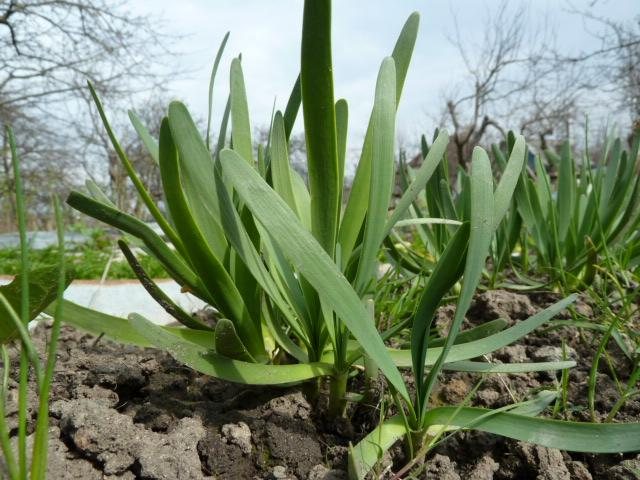

Site requirements
Slime onion adores fertile loams, feels comfortable on peat bogs. They dig up a place for culture, deal with weeds. Since autumn, humus or manure is introduced into the ground. In the spring, urea and a special complex used to feed garlic are poured into the holes. It is not necessary to look for a site for a slime onion, closed from the northern winds, the plant is not afraid of the cold, but tolerates stagnation of moisture, it must be planted in a high bed.
Predecessors
In order for the culture to please with yields of juicy and fragrant feathers, the plant must be placed in the place where vegetables were planted last season.
Tomatoes
Slime and tomatoes have no common pests. Onions are not affected by late blight, brown spotting, apical rot and feels fine in the area where this culture grew.
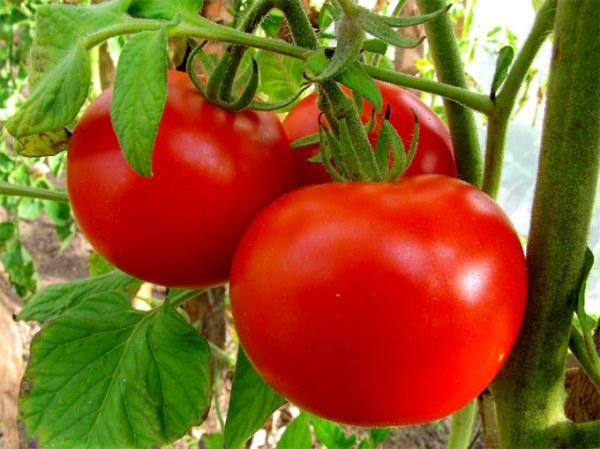

Cucumbers
The vegetable attracts aphids, which feed on leaf juice, suffer from powdery mildew and root rot. The slime does not react to pathogenic fungi that cause peronosporosis in cucumbers, the taste of feathers is not pleasant to microscopic insects.
Potatoes
The main enemy of the nightshade plant is the Colorado potato beetle, which very quickly devours juicy leaves, the spicy green of the onion does not attract the parasite.
Cabbage
The heads of the crop grow as quickly as the feathers of a slime, and the roots do not pull out all the potassium and phosphorus that the onion needs from the ground.
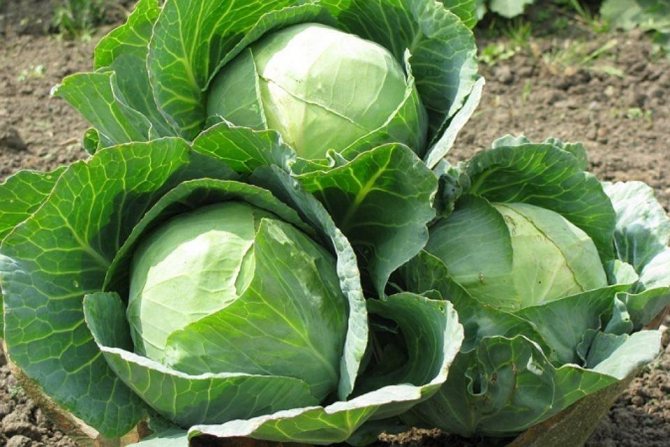

Radish
Some gardeners, who plant a vegetable for the sake of juicy greens, first sow dill or spinach seeds, and after harvesting, they place a slug on the garden bed. Onions feel good after radishes.
Culture onion slime
According to the botanical classification, the slime onion, or drooping onion, belongs to perennials. Initially, it was a wild culture that was found in Mongolia, Central Asia and some regions of Siberia.
It should be clarified right away that there are some features in the planting of slime onions that distinguish this culture among the usual vegetables. Therefore, before planting this plant in a pot on the windowsill or immediately on the garden bed, it is necessary to study all the nuances (Figure 1).
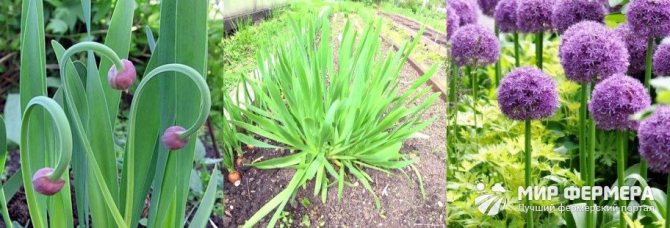

Figure 1. Slime onion - perennial crop
Firstly, it is a perennial crop that is spread using the rhizome. This feature must be taken into account, since even one plant will have to be constantly limited in growth so that it does not fill the entire area. Secondly, the culture tolerates frost and other harsh weather conditions very well. The roots do not freeze even in severe cold weather and the complete absence of snow.
In addition, this unusual type of onion has a very original taste, and in Mongolia it is considered medicinal at all. Moreover, it is most often found in the wild, since slime is specially grown at home only by lovers of its unusual taste.
Growing in a greenhouse through seedlings
In order to cut off the succulent feathers of the culture 15–20 days earlier, serve fresh greens on the table in winter, the seeds are sown in cassette cups to obtain seedlings. Onions from it are grown in a greenhouse or greenhouse.
Soil preparation
Young bushes need nutrients, they feel comfortable in a loose substrate with aeration. Such soil is obtained if combined in equal parts:
- land from the garden;
- peat;
- sand;
- humus.
See also
When to put onions for storage in 2019 according to the lunar calendar
To read
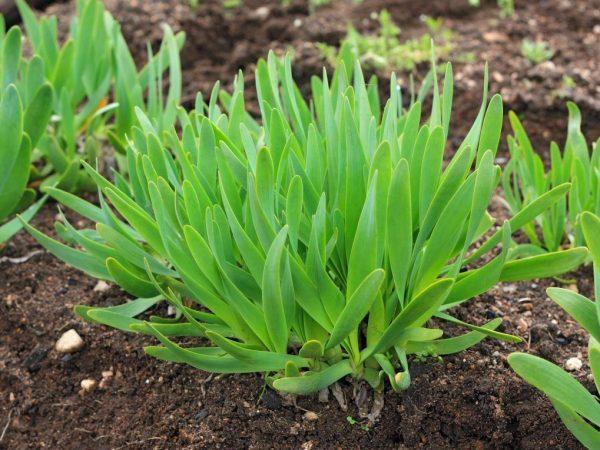

Before planting seeds, the mixture is disinfected from insect larvae. For this, the substrate is heated in the oven or poured with a solution of fungicide or potassium permanganate.
Cassette cups
Containers for planting onions are disinfected, filled with soil, covered with glass and placed in a heat chamber or just in a warm place so that the soil temperature rises to 25 ° C. The seeds are poured into a cloth, which is wrapped in polyethylene, and when sprouts appear, they are sent to cassettes.
Landing scheme
The seed is placed in cups in mid-February. 3 grains are placed in one cell with a heated substrate to a depth of 20 mm, the cassette is filled with soil on top, moistened, covered with glass and placed on a rack, where it is 20 ° C.
The glasses are regularly ventilated, and when green sprouts appear for 5 days, they are taken to a cooler, bright room, then returned back and the temperature is maintained at 25 ° C during the day and 15 at night.
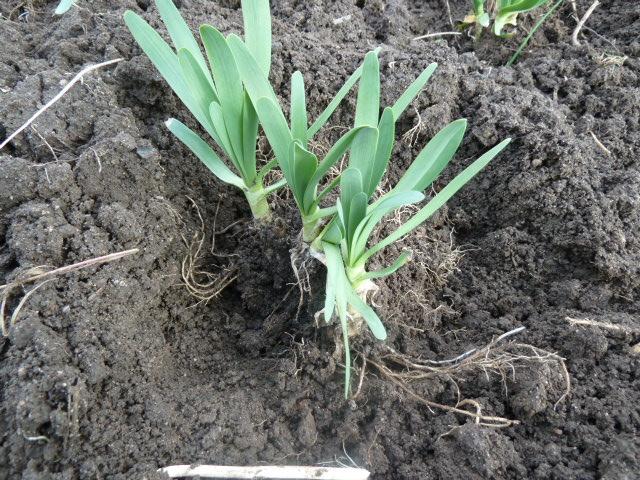

Breeding options
Most gardeners do not breed slime onions, but simply grow them from seeds. But, if there is already an adult bush on the site and it is time to transplant it, you can use one of the other options for obtaining a young plant.
First of all, you can use the method of dividing the bush. It is better to divide the existing bush before or after the beginning of the growing season: earlier in the spring or in late August and early September. The roots of the excavated plants are divided into the required number of parts, but each of them must necessarily consist of 3-4 well-developed onions. Otherwise, the bush simply will not tolerate the transplant. The resulting roots are slightly shortened and simply move the plant to a new location. Experienced gardeners plant the crop in the fall, and then next spring it will be possible to feast on fresh herbs from a young bush (Figure 6).


Figure 6. The crop can be grown from seeds or parts of bulbs
In addition, slug onions are perfectly propagated by seedlings. This method is suitable for residents of regions with short summers. Seeds are planted for seedlings in the second half of February, and with the arrival of stable spring heat, the grown seedlings are simply planted in a permanent place. Moreover, the requirements for soil and care for seedlings and plants grown in the open field remain common.
Care
In order for the plant to please with juicy greens, you need to take care of it - water it, feed it, protect it from pests, and prevent disease.
Weeding and loosening
It is impossible to allow the earth to be covered with a crust, since the air will not be able to flow to the roots, the bulb will begin to rot, and the slug will not please with juicy feathers. The beds need to be loosened after watering, constantly fighting with weeds so that they drown out the plantings.
Top dressing
In the fall, manure is introduced into the soil or the soil is filled with compost at the rate of 7–8 kg per 1 square meter. m. In the spring, each bush is fertilized with superphosphate and potassium salt. Slime needs such substances even after cutting the feathers.


Watering
The soil in the garden should not dry out, otherwise the leaves become tough and lose their juiciness. In the heat, the onions are irrigated every other day, you need to make sure that the soil always remains moist.
Mulching
The beds are sprinkled with cut grass, hay or peat, which helps to protect cultivated plants from weeds, to reduce water evaporation after irrigation or rain.
Summer mid
Summer for the slime is a blessed time. The rhizome of the plant is formed at full speed and the foliage is growing. All this time we do not stop monitoring soil moisture, and important things lie ahead. Once the leaves have reached a length of 30 cm (depending on the type of slime onion), they must be picked immediately to prevent aging. New leaves grow back quickly, so you'll have to harvest almost twice a week. By the way - slime, grown from seeds, by mid-June is already quite suitable for the first pruning.
After two or three circumcisions, it is necessary to feed.For this, a mixture of superphosphate and ammonium nitrate at the rate of 30 grams per 1 running meter is quite suitable. Subsequent feeding of the wires immediately after each collection of leaves.
From the beginning of July, the seedling slug will start to release arrows. Nothing wrong with that. Peduncles can be left for beauty by temporarily stopping the collection of leaves. Slime onions bloom brightly, effectively, but not for long, so after two weeks, you can again resume using fresh leaves for your culinary purposes. Watering, weeding and soil cultivation does not stop.
After flowering, the onion forms seeds that can be used for subsequent sowing.
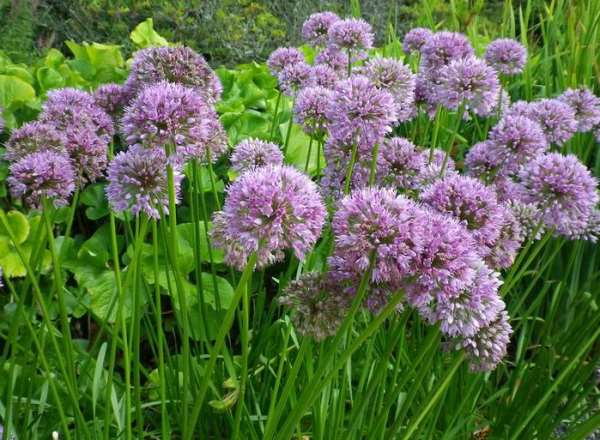

Great decoration of the garden
Around the middle of August, we begin a specific harvest. Cut the leaves with a sharp knife almost at the very ground, leaving an internal rosette. Slime onions are very fertile. As a rule, you can collect up to 4 kilograms of greenery from one square meter.
Diseases and pests
On the beds, the bulbs can become infected with pathogenic microorganisms; it cannot be ruled out that the plant is not attacked by insects. To prevent the development of diseases, slime is watered with a solution of potassium permanganate and the cut points on the feathers are also treated with it.
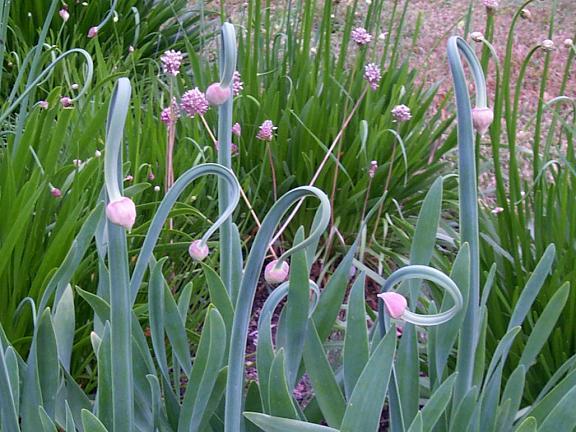

The leaves of the culture attract weevils and onion flies.To ward off these insects from the beds, the slime is treated with a composition made from laundry soap.
Plant care
Caring for this vegetable crop involves regular watering in the recommended doses, timely loosening and weeding of the earth, as well as the obligatory cutting of leaves and fertilization.
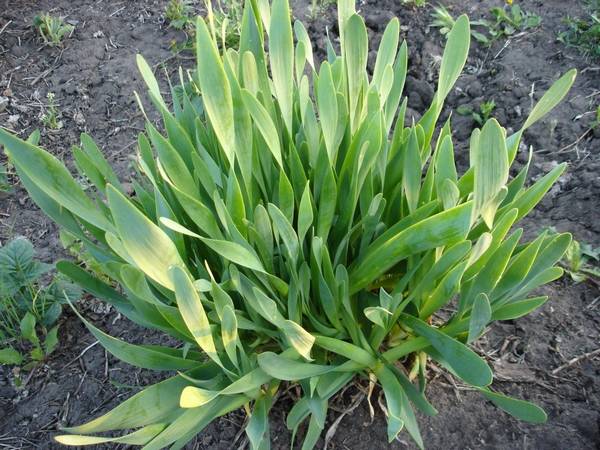

In the second and other years after the growth of this onion, the site should be freed from the remaining parts of the crops, as well as loosen the soil in the aisles. In addition, experts and experienced gardeners advise adding nitrogen fertilizers to the soil in an amount of up to 25 grams per square meter. In the summer, be sure to carry out about three pruning of leaves, the length of the cut should ideally be up to 25 cm.In order for the plants to recover after this procedure, it is recommended to carry it out for the third time no later than the end of August.
Also during this period, phosphorus-potassium fertilizer should be applied. To do this, it is taken at the rate of 50 grams of superphosphate, as well as about 30 g of potassium salt. It should be remembered that the forcing of plants that are two or three years old is usually driven out in greenhouse conditions, or even at home. In this case, in the fall, the plants need to be dug up and moved to shallow boxes, and then left outside to freeze. They can be used with the bulb in a month - after the leaves grow back.
Advice
In order for the slime to please with juicy feathers, you need to make sure that the earth does not dry out. Experienced gardeners recommend mulching the soil with cut grass, which rotting, not only protects against weeds and retains moisture, but also serves as a fertilizer for the bulbs. The leaves must be cut off when they grow to 20 cm. The bed must be loosened so that the soil is not taken up by the crust.
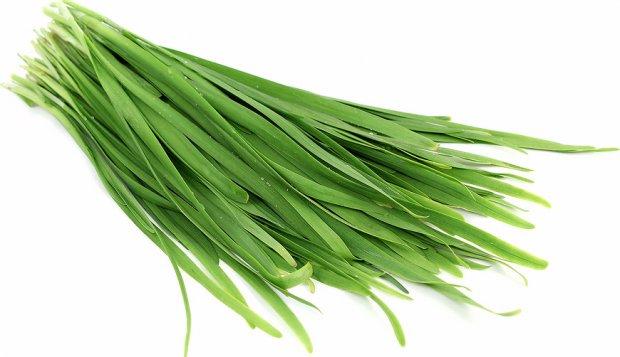

Growing from seeds
For planting a plant, you can use a vegetative method or carry out the cultivation of slime onions from seeds. Ripe seeds can be harvested on a flower stalk in early autumn. The collected material can be stored for 3-4 years. All this time, they maintain good germination.
If sowing with seeds is carried out in early spring, then seedlings are grown first. In the summer, the seeds are planted in the ground. This can be done until the very middle of the summer season. The seedlings need to be strengthened before the onset of frost. But due to the fact that the plant is frost-resistant, then, as a rule, the seedling stage is bypassed and the seeds are planted immediately into the ground.
If sowing falls in mid-April, then the seeds are no longer destined to freeze, and they will germinate successfully... Seed planting rules:
- The seeds must be placed in warm water and kept in it for a day.
- Dry a little before planting.
- Planting is carried out in a shallow, slightly moistened groove, not exceeding 1 cm deep.
- After sowing, the bed should be covered with plastic wrap. It is harvested when the seeds begin to germinate.
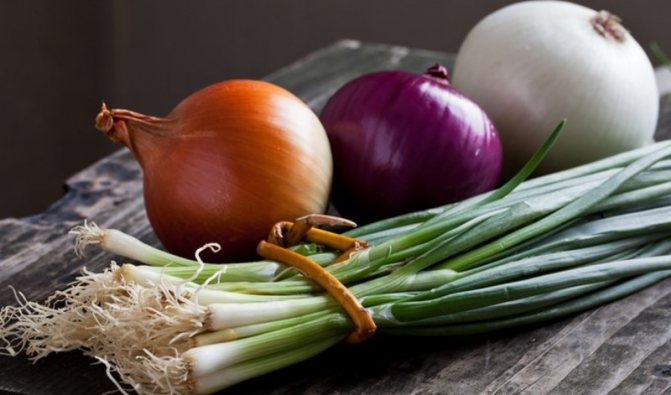

When the seedlings get stronger, thinning is carried out. This procedure is performed so that the distance between them is 20 cm. Care involves weeding, watering and loosening. The next year, the plant is able to bloom. It will be characterized by the presence of all varietal traits. A year later, the plant begins to bear fruit fully.
Testimonials
Many people plant a culture not only for the sake of juicy greenery, but also to decorate the site.
Tatyana Petrovna, Voronezh: “Slime has been growing in our garden for 10 years, but still we have to divide the bulbs and sow seeds, since old sockets give less greenery. Delicate feathers dry for seasoning and freeze, I really like the taste of the leaves, not as pungent as that of onions. "
Viktor Sergeevich, Kineshma: “I use the slime mainly for decorative purposes, it looks very beautiful on an alpine hill, when inflorescences appear in the form of lilac balls. To prevent the onion from growing and losing its attractiveness, I cut off the feathers, my wife makes a seasoning from them. "
Description and features
The plant forms a fan-shaped rosette of flat edible leaves up to 30 cm long and 1.5-2 cm wide, slightly twisted around the axis. Peduncle up to 70 cm tall with an umbrella of pink-purple flowers at the top.
Interesting! This onion is characterized by both garlic and onion taste, but more delicate than wild garlic or onions.
Slime onion leaves are not only eaten fresh, but also pickled and frozen.
This onion will be a wonderful decoration for the May table. Planting at the end of summer will make it possible to cut greens in the spring - due to the high cold resistance of the species, the leaves begin to grow very early.
The medicinal properties of the slime deserve special attention. The high content of iron and other trace elements makes it possible to recommend this onion to people suffering from vitamin deficiencies and blood diseases. The juice helps heal scratches and wounds.
In addition, the slug onion, whose useful properties are so multifaceted, looks good in flower beds, rocky gardens, as a framing for a lawn or when creating a decorative vegetable garden. Caring for him will be little different from caring for other ornamental plants.
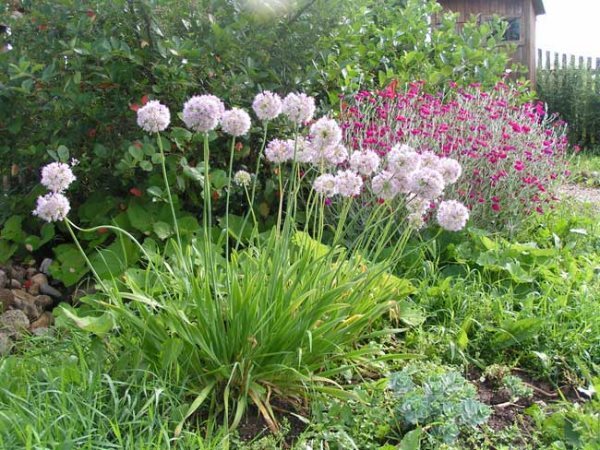

Decorative use
Slime's decorative function
Many summer residents use this plant for decoration. It grows like indoor ficuses with neat even leaves, and when the plant blooms, then the flowerbed is very beautiful. There is another important function of this herb, it limits the growth of roots in creeping plants. If you plant onion bushes in a circle with clubs, and other flowers in the middle, then the leaves will look like a green hedge, preventing weeds from entering and protecting creeping plants from coming out. Also, onions are planted along the curbs, then the grass will not bother, overgrowing the sidewalk. As you can see, Slime onion, when properly grown and cared for, is useful not only in nutritional terms, but also in aesthetics.
Some craftsmen combine the decorative and nutritional function of the onion, planting it in the form of a flower bed and, if necessary, harvesting it.
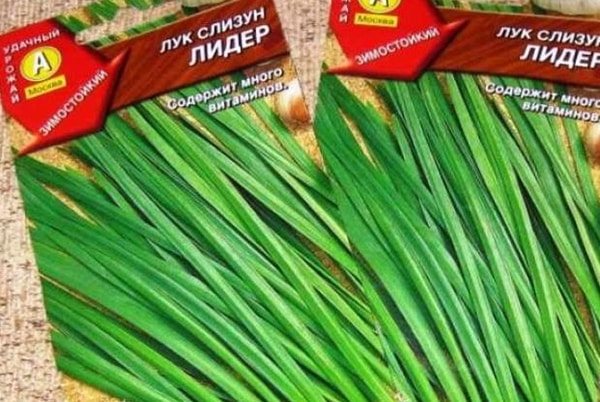

Chemical composition
The leaves and the false bulb contain up to 90 mg of vitamin C per 100 g of the product, up to 10% dry matter, including up to 3% sugar. They contain a lot of mineral salts, especially iron, as a result of which the onion is also called glandular, so it is especially useful for anemia.
Slime onion leaves contain vitamins C, E and PP, K, A, group B, as well as carotenoids. Like any green plant, slime contains a lot of chlorophyll and has a rich mineral composition.Of the macro- and microelements, it contains potassium, manganese, zinc, iron, magnesium, zinc, nickel and molybdenum. It also contains phytoncides, flavonoids, essential oils.
Description of this perennial species
Slime onion is a perennial rhizome plant that is grown only by lovers of this type of vegetable.
What does it look like?
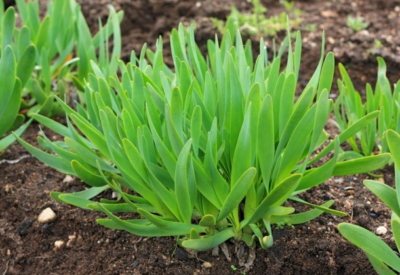

Outwardly, slug looks like a fragrant onion. The main difference lies in the width and thickness of the sheet.
Slime onion is a low herbaceous plant. The stem height reaches 70 cm. The leaves are flat, juicy, fleshy and rather fragile. They are 25-30 cm long and 2.5 cm wide. The leaves have undulating bends. The surface of the leaf plate is painted in a deep dark green color and covered with a waxy coating. The leaves contain a large amount of mucus, which is visible when broken.
Near the base, the leaves form a lush basal rosette.
The bulb, like other onion crops, is absent in the slime. The root system is a false bulb with a diameter of 2 - 3 cm and well-developed lateral roots. During the period of active growth, a large number of thickenings are formed around the mother bulb, which are located around the central bulb. Each onion is covered with scales, which become dense by the end of the growing season.
The flowering period begins in the second or third year of the plant's life. Before its onset, the stem of a slime onion has a drooping shape, and with the beginning of the formation of buds, it straightens. The flowers of the slime are small, collected in beautiful spherical inflorescences of white, pinkish, lilac or lilac color.
The seeds ripen gradually, so they are harvested in several stages.
Features of the
Slime onions are not like other members of the family. The main differences of the variety are:
- resistance to low temperatures;
- early ripening of greens;
- the ability to grow a crop in one bed for five years;
- high content of vitamins and microelements in ground shoots;
- leaf formation during the entire period of crop growth;
- greens have a delicate taste, juiciness and softness.
Taste qualities
Onions have a slightly pungent taste, without bitterness, with a garlic aroma, since they contain a small amount of essential oils.
Growing: choosing a site
All perennial bows are hardy and unpretentious. Slime onion is no exception. Photos illustrating this plant also emphasize its high decorative effect. In addition, this vegetable does not freeze in winter, tolerating frosts down to -40 ° C, fruitfully bears fruit in one place for 5-6 years, diseases and pests usually bypass it.
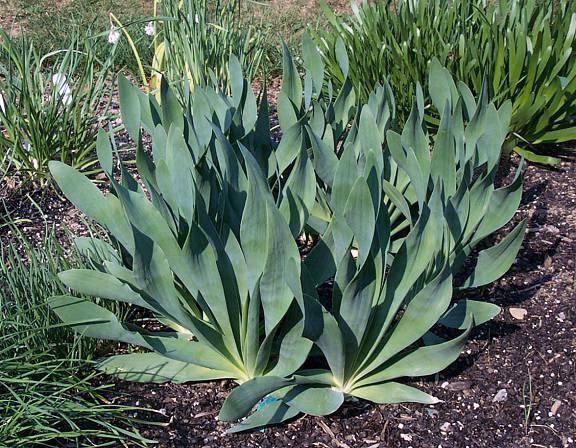

Preferring sunny destinations, it also tolerates short-term shading well. The best predecessors are tomatoes, cucumbers, potatoes, cabbage, and other cruciferous plants. You should not plant a slime in a garden where bulbous were previously grown.
How is it stored?
The cut greens are kept cool for 10 to 14 days.
- To extend the shelf life, the feather is packed in plastic bags.
- For longer storage, the leaves are not cut, but the plant is dug up along with the bulbs.
- The dug out bushes are placed in containers and kept in the cellar.
- For preparations for the winter, greens are dried, salted or pickled.
Slime onion is a unique plant that has been appreciated by many gardeners. The culture is easy to care for, resistant to adverse climatic conditions and diseases, and has good taste.
Origin and description
Slime onion is a herbaceous perennial plant. It grows in Siberia, Altai, Transbaikalia and, in this regard, received the names "Siberian onion", "mangyr". Description of the slime: this is a plant with juicy wide leaves that break easily, while secreting a liquid - slimy juice. Hence the name of the culture. The herbaceous plant has fan-shaped leaves that bend slightly in a spiral.Their width is about 2 cm, their length is up to 30 cm.
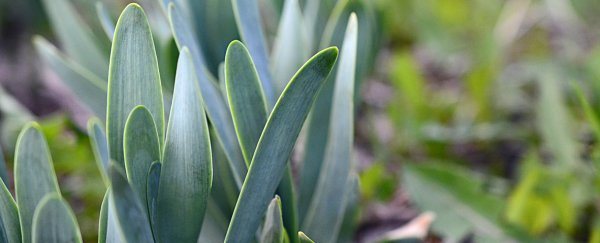

The plant begins to bloom in the second year after planting in a permanent place. Spherical umbrellas of pink or lilac color are formed. In the photo, the slime onion during the flowering period, which occurs in the second half of summer.
Advantages and disadvantages of the variety
Slime has a number of advantages... These include:
- high productivity;
- early appearance of greenery;
- unique chemical composition;
- pleasant taste and aroma;
- unpretentiousness;
- frost resistance;
- the ability to grow a crop for 4-5 years after planting.
But like any garden plant, this the variety has several disadvantages:
- poor reaction to flooding of the garden during thaws and heavy rains;
- small onions;
- intolerance to long droughts.
Difference from other varieties
Among the features of the slime:
- lack of a rest period;
- greens retain their juiciness for a long time and quickly departs after frost;
- the harvest is harvested before autumn, since the foliage does not coarse and does not become bitter;
- stored for a long time in cut form.
Unlike other types of onions, slime contains small amounts of essential oils., therefore it does not taste bitter at all.
How to plant?
The onions are planted according to the scheme of 30 × 15 centimeters, while leaving a distance of 30 centimeters between the rows of onions. The roots fill the soil during growth and thus rid the garden of weeds. She just has nowhere to grow.
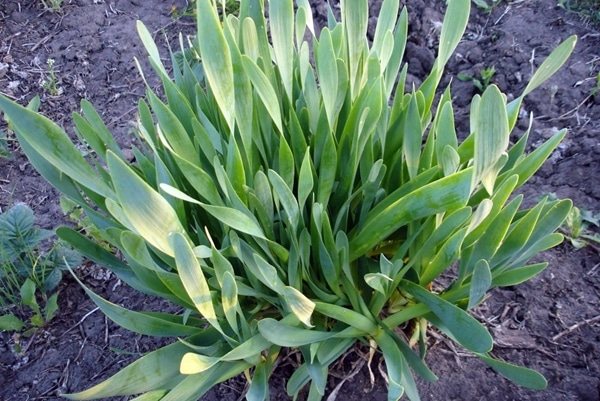

After four years, the onion ceases to produce a high-quality crop due to the overgrowth of roots, it simply does not have enough space in the garden. Therefore, it is transplanted by removing excess tops. Only young green shoots with a part of the root are left. After removing the onion, the earth is well dug up, removing all the roots.
Soil preparation and planting
Ideally for drooping onions, soil with a neutral-waterproof suspension is suitable. Acidic soil is not suitable for the plant, as this can change the taste of onion feathers and give it a bitter taste.
In order to reduce the acidity of the soil, you need to add to the soil dolomite flour or chalk... Humus or compost is added before creating the garden, at the rate of 6 kilograms per square meter.
The plant is not whimsical to care for and grows well anywhere, but in open sunny places it will grow better and give juicy and tender greens. To get a rich harvest, the bush needs transplant to a new place every 5 years.
The beds where legumes used to grow are best suited, since they have the property of enriching the soil with nitrogen and making it looser and more porous.
Slime onion cannot be poured and it is necessary to ensure that rainwater does not stagnate in the holes. With too much water, the bulbs will start to rot. There are several rules for getting a good harvest and for a strong and healthy plant:
- Leaves should not be trimmed in the first year of growth. This will help the bulb gain strength and grow stronger by next year.
- In the second year, we cut off the minimum number of leaves.
- In the third year of growth, all feathers are cut off. Over the years, the bulb will accumulate nutrients in order to spend on the formation of green mass.
- Drooping onions should not be planted close to other bulbous plants. This is due to unwanted pollination and giving the culture a bitter taste, and the plant will lose its garlic-onion smell.
- In an adult bush, constant pruning of arrows is necessary.
Optimal growing conditions
Slime onions can be grown in open ground, greenhouses or greenhouses or in various containers - boxes, pots. In any case, you need to remember about the need for sufficient space, since the culture is growing a lot.
For successful cultivation, other conditions must be observed:
- Following the rules of crop rotation. It is good to plant slug after cucumbers, cabbage, tomatoes, potatoes and other nightshades. Planting is also effective after green manure.Any representatives of the Onion family are bad predecessors.
- Sunny area. The culture is frost-resistant and shade-tolerant, but it also loves warmth with light.
- Elimination of moisture stagnation. It is better to choose an elevated area without close groundwater. Excess moisture negatively affects the root system of the culture and can provoke the death of the entire plant.
The slime-onion is unpretentious to the peculiarities of the soil. The culture prefers loamy soils. The acidity level is important. It may not affect the growth and development of culture, but it affects the taste of greens, giving them unwanted bitterness. If the soil is acidic, then dolomite flour, chalk or lime should be added to it.
Slime onion is a frost-hardy plant, so it is not required to dig it up for the winter. They resort to this measure if you want to get fresh greens in the winter. In this case, you need to dig out the rhizomes and plant them in containers or boxes.
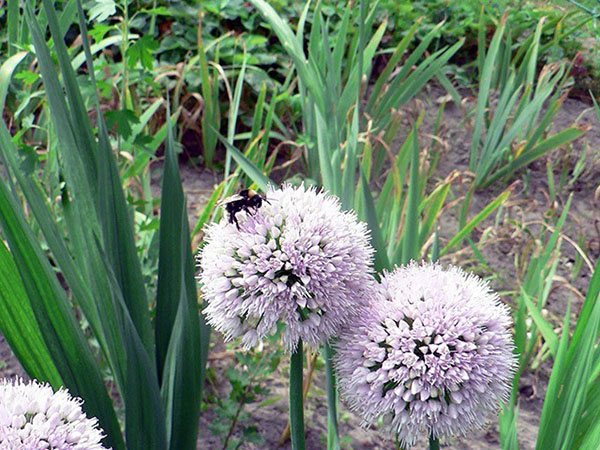

A special shelter for the winter for a slime onion in the open field is not required. You can cover it with grass or leaves if the winters are rather harsh.
Growing features
The perennial onion of the described variety for the first year of growth gives a crop with a small content of useful elements in the leaves. In the third year, the onion gives a good harvest with juicy leaves that have excellent taste and contain many vitamins and minerals.
The first harvest can be obtained in May. Throughout the growing season, onions can be trimmed up to 7 times. Leaves should be cut when they reach 22–30 cm and 4–6 cm above ground level. To obtain earlier production, it is necessary to use film covers.
For harvesting, you need to choose dry weather. The cut leaves are placed in polyethylene bags and placed in the refrigerator. There they can be stored for up to 20 days. When harvesting, together with a bulb and a lump of soil, it is stored in wooden boxes in the basement (basement, cellar, underground).
Fresh slime onions go well for salads. It is also used to prepare meat and fish dishes.
Did you know? The ancient Greeks preferred to use onions only for medicinal purposes: they were repelled by its not very pleasant smell.
Slime onions will delight gardeners with the first vitamin greens and can even be grown on a windowsill. Caring for it is simple, and the result will be a useful product.
Growing and caring for slime onions does not take much effort. In the first year, regular watering, loosening the soil, and removing weeds are needed. Features of growing crops:
- Pots, boxes are suitable for planting, you can grow a crop in a greenhouse or in a garden bed. It should be borne in mind that the onion grows strongly and requires a large area.
- When planting, keep the distance between individual seedlings at least 15 cm.The rows are made every 20 cm.
- The plant is resistant to cold weather, withstands record temperatures for many other crops (up to -40 ° C).
- It is important to follow the rules of crop rotation. The best precursors to slime are cucumbers, tomatoes, potatoes, and cabbage.
Benefit and harm
Many gardeners have appreciated this culture. Slime onions have a number of beneficial properties. Its leaves contain:
- a large amount of vitamins C, PP, D, B1, B6;
- iron;
- potassium;
- zinc;
- magnesium;
- molybdenum;
- phytoncides;
- glucose and polysaccharides.
Its use affects the condition of the heart, blood vessels and the hematopoietic system.
- The mucous substance contained in the leaves normalizes the functioning of the gastrointestinal tract. Its use is indicated for gastritis and ulcers.
- The leaves of the plant help to remove toxins and toxins from the body, disinfect and heal wounds.
- The plant is used to strengthen the body's immune system and relieve pain.
- A decoction of the leaves is used in cosmetology to prepare masks and decoctions to prevent hair loss.
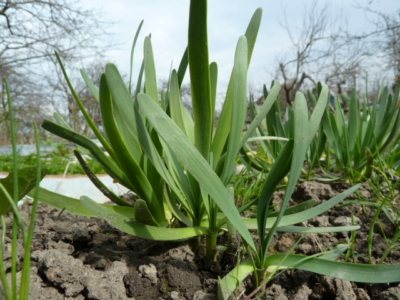

Despite its beneficial properties, onions can be harmful to the body.
- The culture should not be consumed by people prone to allergic reactions.
- It is contraindicated in diseases of the liver and pancreas.
- It is recommended to limit the use of onions for cooking during the breastfeeding period, as they significantly impair the quality of breast milk.
How to grow onions on the site?
These healthy greens can be grown in your own garden.
Important! In case of exacerbations of the gastrointestinal tract or allergies, onion slime should be excluded from the diet. It should be used with caution by nursing mothers and with gout.
Sowing seedlings is carried out in the second half of February or early March. In mid-May, the grown seedlings are planted. It is also planted in open ground with seeds from April to May, when the earth warms up enough.
You can make podzimnie crops shortly before the onset of frost.
For planting, choose a site well-lit by the sun's rays without the possibility of water stagnation in spring and after heavy rains - in this case, high beds are needed. Possibly close occurrence of groundwater, but without waterlogging. All types of onions love moderate humidity.
The vegetable in question should be planted in a place where cabbage, tomatoes, cucumbers, radishes, as well as potatoes, beans and cereals previously grew. The optimum temperature for active vegetation of this plant culture is 20 ° C.
Important! Do not plant slime onions after bulbous crops.
Soil and fertilizers
Slime prefers loamy and peaty soil with a neutral reaction (pH 6.0-7.0). He does not like acidic soils. Before planting seeds or bulbs, the site must be prepared: it must be dug up and organic fertilizers applied. It is not worth using mineral fertilizers only if the soil is not fertile.
Read more: Beetroot Care - Vienna Country House
Planting should be often thinned out and fertilized with humus or rotted manure in autumn (6–8 kg per 1 m²). In the spring, you can add more humus (5 kg per 1 m²) along with the introduction of mineral fertilizers (30 g of ammonium nitrate, 30 g of superphosphate and 15 g of potassium fertilizer).
The dug area must be trimmed with a rake and compacted a little so that the seeds do not sag and do not go deep into the ground.
Planting onions
Onions can be planted with seeds, or you can use the vegetative method. When planting with seeds, you must first grow the seedlings. This method makes it possible to get the onion harvest early. The planting itself is carried out in the second half of February. For this purpose, soil from sod land and humus in equal parts is suitable.
Before using it, it is imperative to disinfect it - for example, warm it up in the oven or microwave. Then it should be watered with a weak manganese solution, covered with plastic wrap and put in a warm place for several days.
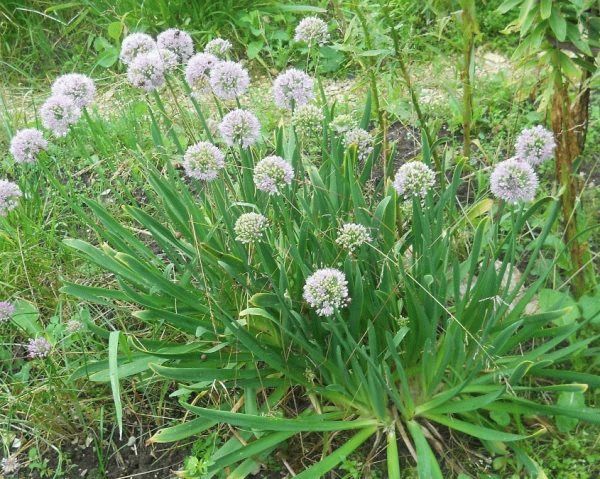

The seeds also need to be prepared. They need to be warmed up by placing them on a heating radiator 2 weeks before sowing. Before planting itself, you need to carry out the disinfection process by holding the seeds in a manganese solution. Then they must be rinsed in water and dried. After that, planting is carried out in a container with prepared soil.
Important! In the same place without transplantation and reproduction, the described vegetable can grow for no more than 5 years. If you leave it for a longer time, then there will be a sharp decline in yield.
In open ground, seeds are planted in mid-May. Seed material is planted to a depth of about 1 cm in rows. The gap between the rows is about 40 cm. The soil should be lightly tamped on top of the seeds. After the emergence of shoots, it is necessary to thin out the planting area, leaving a distance of 15 cm between the plants.
Reproduction in a vegetative way is carried out at the end of the summer period or in early September. Specimens 2-3 years old are ideal for reproduction. For this purpose, they dig out the slime bushes and divide each into several parts.At the same time, there should be four bulbs on each horizontally located root. Then all parts are planted separately in the ground in early spring.
Reviews of gardeners about slime onions
The opinions of gardeners that they have already grown slug onions on their plots are presented below.
- Diana Kanareeva: “I love slime onions much more than any other species. To begin with, I just like its appearance, but in addition, the plant pleases with a pleasant taste and garlic aroma. It enhances the taste of any dish. I just grow in a flower bed. The leaves and peduncles of the plant are beautiful, so that it is in harmony with ornamental crops. I recommend everyone to try! "
- Pavel Dyachenko: “For a long time I could not understand what kind of plant grows near my house. As it turned out (a neighbor suggested) - this is a slime onion, which can be eaten like a simple feather. I grow a lot of different greens for sale, but this onion is not in demand among buyers, but my household is delighted with it. So simple onions from the garden are sold, and slug goes to the table. I recommend trying it - it grows by itself, does not require care, but at the same time it is very useful and tasty! ".
- Valentina Mokhova: “Slime onions are easy to grow, so I prefer them. It does not require serious care, it can do without watering for a long time, thanks to its developed root system. And since the plant is perennial, it does not need to be planted annually - which is a great time saver. I use it for summer snacks, hot meals. When the harvest is very large, I partially dry it and put it in jars, and then gradually use it instead of simple onions for making soups. In this form, it can be stored all winter. "
We suggest that you familiarize yourself with: Tarragon herb - useful properties, application
Tags: agricultural technician, onion-slime, application
About
«Previous post
How and when to plant slime onions with seeds in open ground
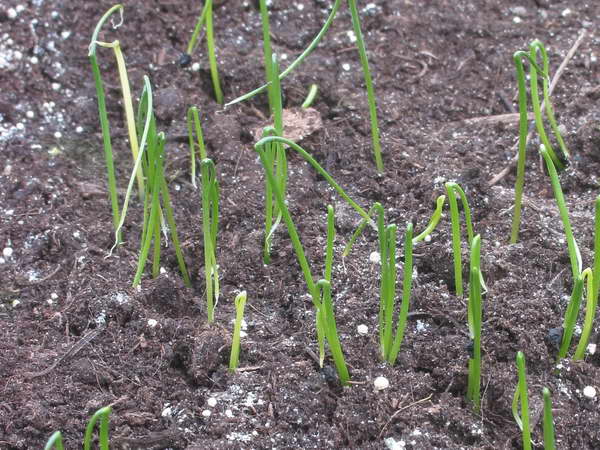

How to sow onion slime seeds in the ground
The plant is propagated by seed and vegetatively.
Before sowing, soak the seeds in a growth stimulant solution for a day and dry until flowable, then sow immediately.
Start sowing in spring, as soon as there is an opportunity to go out into the garden.
- Make grooves, keeping a distance of 30-35 cm between them, plant the seeds to a depth of 1.5-2 cm.
- Seedlings will appear in 20-25 days, they will need to be thinned out, leaving 8-10 cm between the plants.
- It is important to regularly weed young plants from weeds, loosen the soil. You can harvest next season.
Sowing before winter spend in October so that the nigella does not have time to rise before the onset of winter.
Do I need to trim?
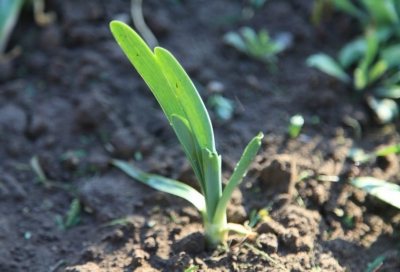

In order for the plant to develop correctly and give a good harvest, experienced gardeners recommend not cutting off young greens in the first year after planting. In the second year, you can cut a small amount of leaves, and in the third year, collect the feathers completely. During this time, the root system is fully formed and accumulates a supply of nutrients for the development of green mass.
Cutting of green leaves is carried out once every 10 - 15 days. During this time, there is an accumulation of sugar and vitamins. It also helps prevent bulbs from shooting.
Reproduction by dividing the bush: a step-by-step algorithm of actions
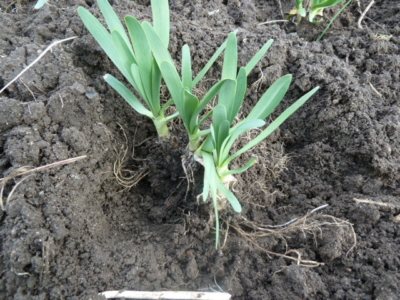

For reproduction by dividing the bush, adult strong, healthy plants that have reached the age of three are used. It is necessary that each of them has 3 to 4 bulbs. If the bush is divided in the fall, then with the onset of spring, planting will give the first greens.
The division is carried out in the following sequence:
- dig up the plant from the garden, being careful not to damage the root system;
- divide the bush into several parts;
- shorten the roots;
- plant delenki in previously prepared holes, sprinkle with earth and water.

